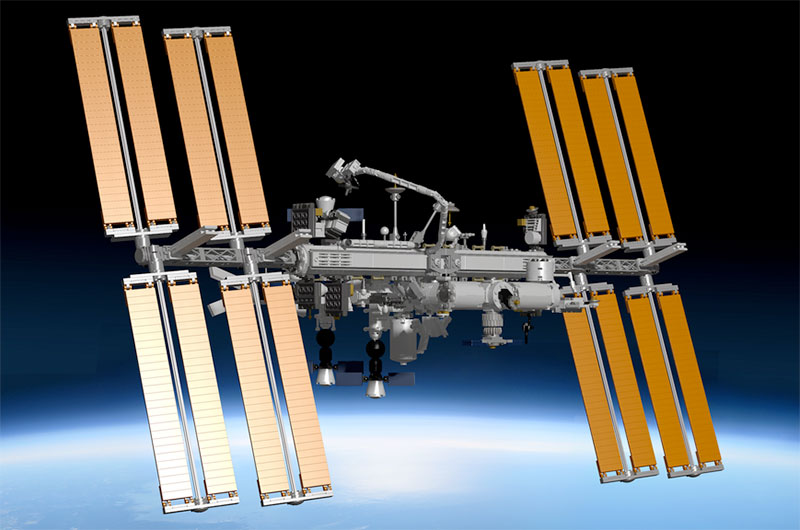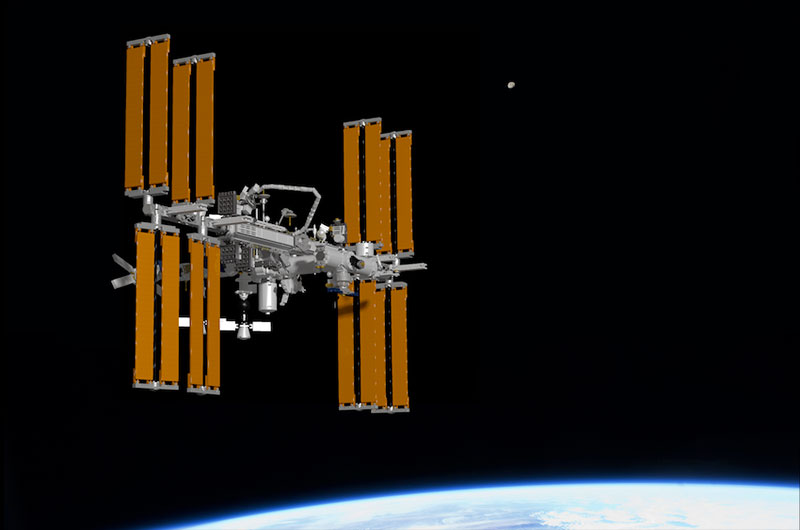Fan's LEGO International Space Station on Mission for 10,000 Votes

It took 200 astronauts and cosmonauts some 13 years to create the International Space Station. Now, just under 4,500 people may be able to achieve the same in less than 50 days.
Sort of.
A fan-designed LEGO version of the International Space Station has passed the halfway mark towards the 10,000 votes required for the toy company to consider producing the orbiting outpost as a commercial kit. But, the station model needs to recruit 4,500 more supporters in less than two months or the project will expire.
"This space station is out of this world!" LEGO told the model's creator, Christoph Ruge, in a comment posted to the LEGO Ideas website on Thursday (March 12). "Now it is time to ignite those thrusters... and make that final push to 10,000 supporters!" [LEGO and Space Travel: A Photo Gallery]
Ruge, who goes by the username XCLD on LEGO Ideas, first submitted his toy brick-version of the orbital complex in March 2014. As LEGO noted, "in last few months, there has been a huge upswing in support," in part due to social media mentions by both NASA and the European Space Agency (ESA).
"A space station design is up for LEGO community fans to vote on," NASA wrote on Twitter in November.
"The International Space Station — built with LEGO. But you have to vote to turn it into reality," ESA then wrote on Facebook the following month.
Get the Space.com Newsletter
Breaking space news, the latest updates on rocket launches, skywatching events and more!
Ruge's model recreates the International Space Station in its current configuration, including all of its U.S., Russian, Japanese and European modules. Built from slightly more than 1,000 LEGO bricks, it features solar array wings that rotate, an articulated robotic arm and visiting vehicles that can dock to the outpost (Ruge includes Russian Soyuz and Progress craft but has also modeled SpaceX's Dragon and Orbital ATK's Cygnus resupply ships, as well as the European Automated Transfer Vehicle, or ATV.)
And like the real space station, which is about to undergo a few module relocations and additions, Ruge's LEGO ISS is modular in design.
"You can freely reconfigurate (sic) the station to your own ideas," Ruge wrote on his project's page, adding that his idea for the final set "might come with additional pieces to cover upcoming upgrades of the original station."
If his model makes it to 10,000 votes in time, and if LEGO chooses it for production, it would be the first time the toy company has sold a complete International Space Station. In 2003, LEGO, in partnership with the Discovery Channel, offered a 162-piece model of the orbiting laboratory based on its then-still under construction configuration.
The real space station was declared complete eight years later in 2011. This November, it will mark the 15th year the laboratory has been continuously crewed.
In 2012, one of those crewmembers, Japanese astronaut Satoshi Furukawa, actually assembled a LEGO model of the complete outpost while he was living aboard the space station. The activity was a part of an educational outreach project between the Danish toy company and NASA.
"The ISS was put together in space, piece by piece," said Furukawa. "It's very similar to how you put together LEGO bricks on Earth."
Unfortunately, just like the real station, Furukawa's LEGO model could not support its own weight under gravity and had to be disassembled before returning to Earth.
Ruge's model, which is smaller than Furukawa's, can be supported by a stand or, as he suggests, suspended for display. Such details will be part of LEGO's official review, if the model reaches 10,000 votes.

Currently, the International Space Station is the 19th most supported project on LEGO Ideas out of 11,000 proposed kits. Previously, LEGO Ideas has led to the production of models of Japan's Hayabusa asteroid sample return probe and NASA's Curiosity Mars rover.
Most recently, LEGO reviewed a toy model of the Hubble Space Telescope, which a fan proposed help celebrate the orbiting observatory's 25th anniversary this April and had attracted 10,000 supporters. Last month, the toy company passed on the idea, choosing to produce a LEGO version of Disney-Pixar's WALL-E robot instead.
To vote for the LEGO International Space Station model on LEGO Ideas, visit: https://ideas.lego.com/projects/61057.
Follow collectSPACE.com on Facebook and on Twitter at @collectSPACE. Copyright 2014 collectSPACE.com. All rights reserved.
Join our Space Forums to keep talking space on the latest missions, night sky and more! And if you have a news tip, correction or comment, let us know at: community@space.com.

Robert Pearlman is a space historian, journalist and the founder and editor of collectSPACE.com, a daily news publication and community devoted to space history with a particular focus on how and where space exploration intersects with pop culture. Pearlman is also a contributing writer for Space.com and co-author of "Space Stations: The Art, Science, and Reality of Working in Space” published by Smithsonian Books in 2018.In 2009, he was inducted into the U.S. Space Camp Hall of Fame in Huntsville, Alabama. In 2021, he was honored by the American Astronautical Society with the Ordway Award for Sustained Excellence in Spaceflight History. In 2023, the National Space Club Florida Committee recognized Pearlman with the Kolcum News and Communications Award for excellence in telling the space story along the Space Coast and throughout the world.










